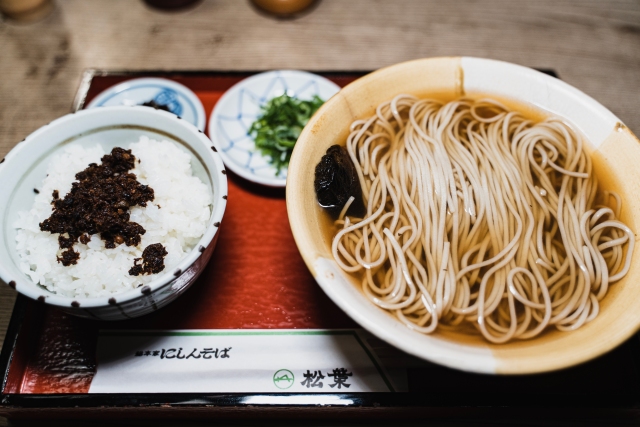
Nishin soba is a Kyoto specialty, but does the restaurant that created it do it best?
For many types of food in Japan, there is said to be a place where it originally came from, a restaurant that pioneered the dish. If you do some research, you can find it.
Nishin soba is a buckwheat noodle dish topped with dried herring that you can sometimes spot at soba restaurants in Japan. It’s pretty much a standard menu item in Kyoto, though, and is said to have been created by the restaurant Kyoto Sohonke Nishin Soba・Matsuba.
▼ The restaurant, located right next to the Shijo Bridge, has been in business since 1861.
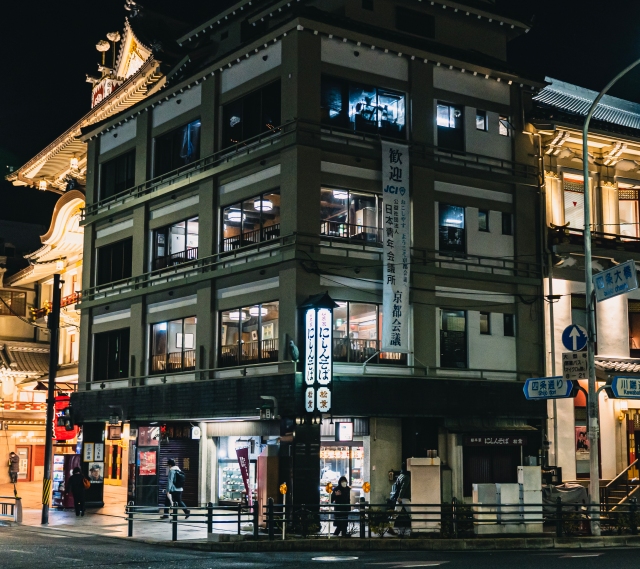
We arrived very close to closing time, and the restaurant was completely empty, but we were okay with this, since it made for easier interior photos.
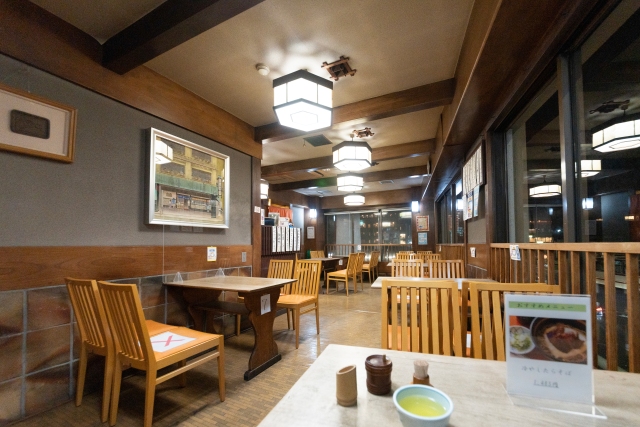
On the table, one of those little “Recommended menu items” placards caught our eye. We picked it up, fully expecting it to recommend nishin soba as its signature dish…
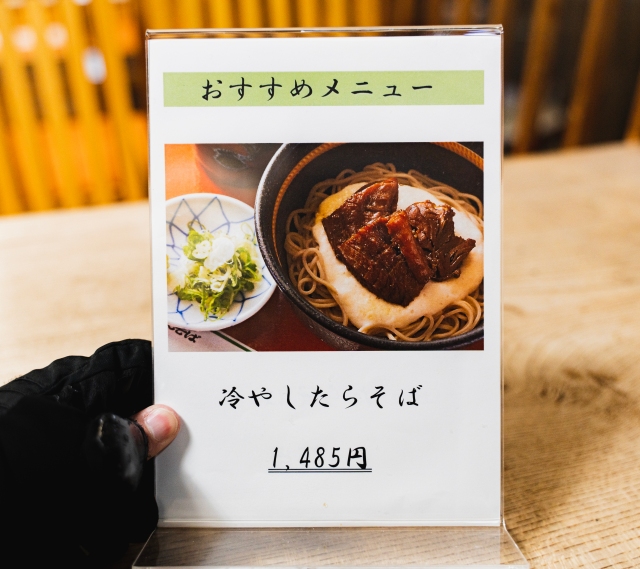
But what it advertised was in fact hiyashi tara soba, or cold soba with cod.
We stared at it, confused for a long time, but then we remembered that these little plaques often have two sides to them. “Oh, right. The nishin soba must be on the other side,” we thought as we flipped it over…
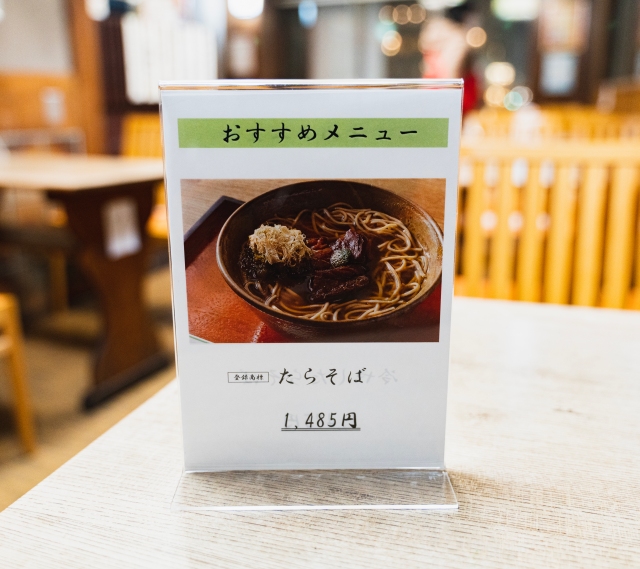
And the other side had the hot version of tara aoba.
Huh? So what they recommend is both the hot and cold tara soba? Seems like they’re pretty passionate about that dish. But isn’t that kind of a slight towards their 161-year-old nishin soba recipe? Maybe they just got tired of it after so long. Or maybe nowadays, for Kyoto-ites, Matsuba is more famous for tara soba. Then should we try the Tara Soba instead?
Our thoughts fell into a maelstrom of indecision and chaos. Was everything we thought we knew about Matsuba wrong? All of our information did come from outside of Kyoto. We didn’t have local insight. Perhaps we should reconsider our original plan…
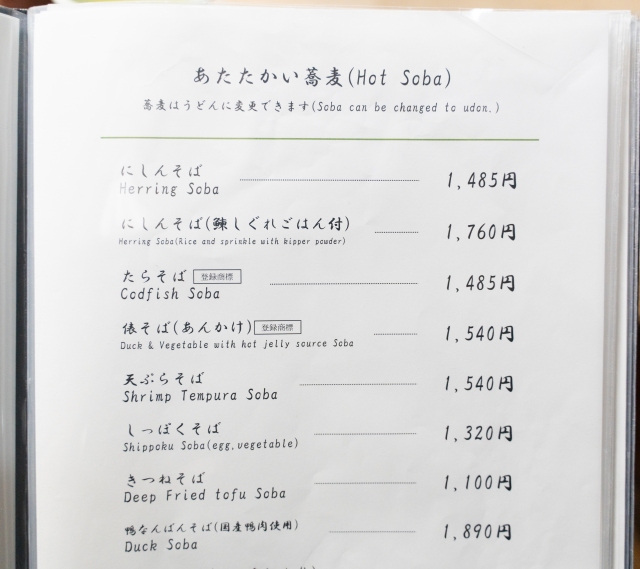
But when we opened the menu, nishin soba, listed as “herring soba” in English, was the very first item, and that made us feel better. If tara soba had been on the top, we’d have had no choice but to eat that, but since the nishin soba seemed to be highly esteemed–based on its position at the very beginning of the menu, and the fact that it’s in the name of the restaurant–we decided to stick with our original plan and ordered nishin soba.
Very soon, a bowl of nishin soba made by the original nishin soba restaurant arrived. Ours came as a 1,485-yen (US$12.90) set with rice topped with Pacific herring seasoned in mirin, ginger, and soy.

But wait…look at that tiny piece of fish. “Is that all?” Well, it is a recipe from the Bunkyu Era (1861-1864)…times were hard then.
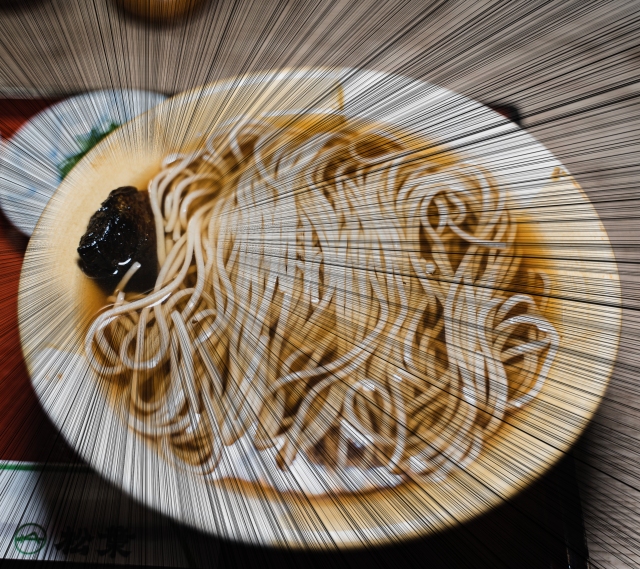
Oh, wait…

Woah!!
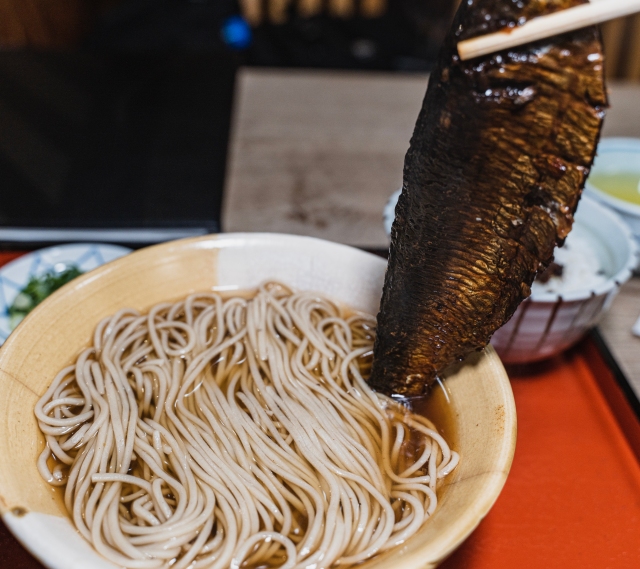
It was super long!!
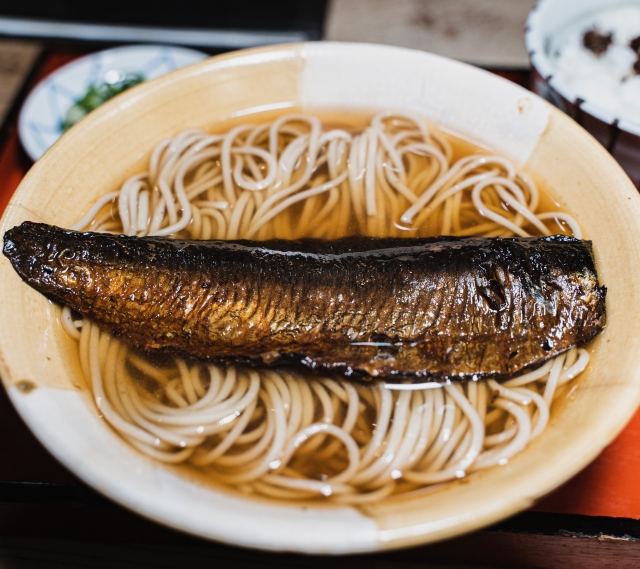
From the look of it, we expected it to be on the firm side, especially since it held its shape when we picked it up with chopsticks. But when we took a bite out of it, it broke apart pretty easily, though it had a solid texture. Since it was such a dark color, we also expected it to have a very strong flavor, but it was actually pretty light and paired well with the soba.
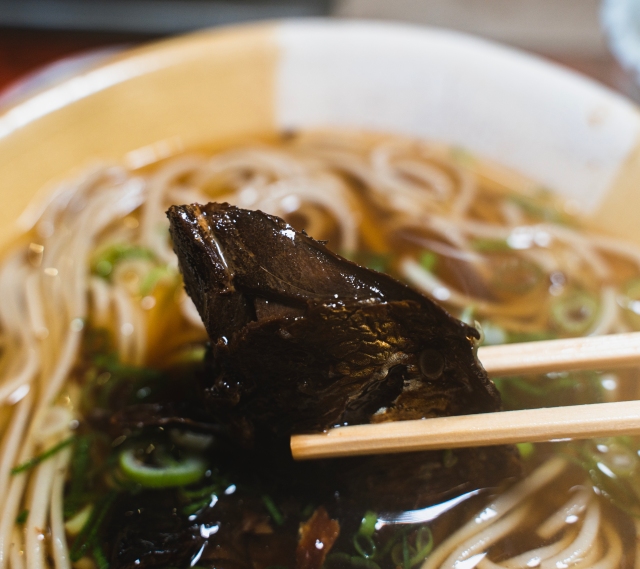
The soba itself was much smoother in texture, and softer, than the soba we usually get at restaurants in the Tokyo area. The broth was also on the lighter side, with dashi being the most prominent flavor. It paired really well with the accompanying rice and herring. Before we knew it, we’d drank it all.

All in all, there was nothing new or shocking about this bowl of Nishin Soba, but that’s what’s good about it. It’s a traditional recipe with authentic flavor. It’s somehow reassuring how predictable, yet tasty, it is.
A lot of restaurants these days launch flashy dish after flashy dish that wow for a moment and then disappear as fast as a firecracker, but this kind of unsophisticated dish is forever. It’s the type of dish you could suddenly feel like eating on a perfectly ordinary day. It was similar to how we felt after eating a recreation of the first-ever ramen in Japan. Sometimes it’s in simplicity where true deliciousness lies.
Restaurant information
Kyoto Sohonke Nishin・Matsuba (Main branch) / 京都 総本家にしんそば・松葉(本店)
Kyoto-fu, Kyoto-shi, Higashiyama-ku, Shijo Ohashi Higashi-iru Kawabatacho 192
京都府京都市東山区四条大橋東入ル川端町192
Open 11 a.m.-7 p.m. (last order at 6:45)
Closed; Wednesdays and Thursdays (may change for holidays depending on the season, also subject to change depending on the state of the pandemic)
Website
Photos © SoraNews24
● Want to hear about SoraNews24’s latest articles as soon as they’re published? Follow us on Facebook and Twitter!

No hay comentarios:
Publicar un comentario